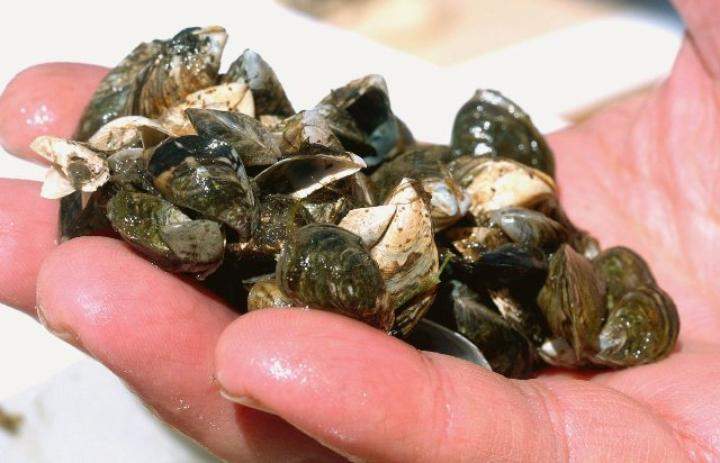Saskatchewan remains free of zebra and quagga mussels, but people can’t let down their guard in preventing the aquatic invasive species (AIS) from entering the province, officials said.

Zebra and quagga mussels are almost impossible to eradicate once established in waterways, according to the South Saskatchewan River Watershed Stewards (SSRWSI).
The organization says the mussels can spread rapidly once introduced, with one female mussel able to produce up to one million eggs yearly.
One way the province says it is preventing AIS from entering Saskatchewan is through watercraft inspections.
Over 3,100 watercraft were checked in 2019, with 1,147 deemed high-risk. Decontamination was carried out on 217 watercraft.
“Provincial regulations remain in place to protect our lakes and rivers, including requiring watercraft to have their boat plugs removed during transport to comply with the province’s Clean, Drain, Dry program,” Environment Minister Dustin Duncan said Monday during the start of AIS awareness week.
- Ontario First Nation declares state of emergency amid skyrocketing benzene levels
- ‘Sciatica was gone’: hospital performs robot-assisted spinal surgery in Canadian first
- Do Canadians have an appetite for electric vehicles? Experts are divided
- Nearly 200 fossil fuel, chemical lobbyists to join plastic treaty talks in Ottawa
Under the program, which applies to all watercraft brought into Saskatchewan and those being transported between waters in the province, owners must clean and inspect everything that comes into contact with water, including trailers and equipment.
They must also drain all on-board water and dry all watercraft and equipment, preferably for up to five days, before transporting.
The drain plug must also be removed while the watercraft is being transported.
Eight mobile watercraft decontamination units are used to carry out inspections, with two units set up at fixed points along the Manitoba border, three along the U.S. border, and the rest placed strategically throughout the province, officials said.
Anyone not stopping for an inspection risks a $500 fine.
Zebra and quagga mussels have been found in three provinces — Quebec, Ontario and Manitoba — and 34 states, including Minnesota, Montana and North Dakota.
Zebra mussel larva has previously been found in Cedar Lake, Man., which is part of the Saskatchewan River system.
While officials say preventing zebra and quagga mussels from entering Saskatchewan remains a top priority, a new strategy introduced by the province in February allows new species to be added to the prohibited list when they are identified as a high-risk threat.
“New for this year is a regulatory change that prohibits the collection of crayfish from any Saskatchewan waterbody, as well as prohibitions related to their use as bait for angling,” Duncan said.
Rusty crayfish and marbled crayfish were added to the province’s prohibited species list in April.
The new strategy also has the province taking a science-based approach to risk analysis and monitoring to assess threats associated with aquatic invasive species.
However, invasive species are not limited to fish.
The Ministry of Environment said it can be any plant, animal and invertebrate species that threatens provincial waterways and those that can damage aquatic habitat, fisheries, valuable recreational resources and important power generation, irrigation and municipal water infrastructure.
Other AIS identified by the province include the flowering rush, Prussian carp, and the spiny waterflea.
The SSRWSI says the flowering rush is an ornamental plant that could have significant environmental and social impacts.
That includes impeding irrigation water, reducing water availability, impacting fish habitat and interfering with boating.
“By understanding the threat and taking appropriate actions, everyone can make a huge difference to the health of our water and fishery resources,” Duncan said.
A report in 2015 from the SSRWSI estimated it would cost the province between $15 and $30 million in maintenance costs annually to deal with AIS.
It is illegal to bring prohibited aquatic invasive species into Saskatchewan.






Comments